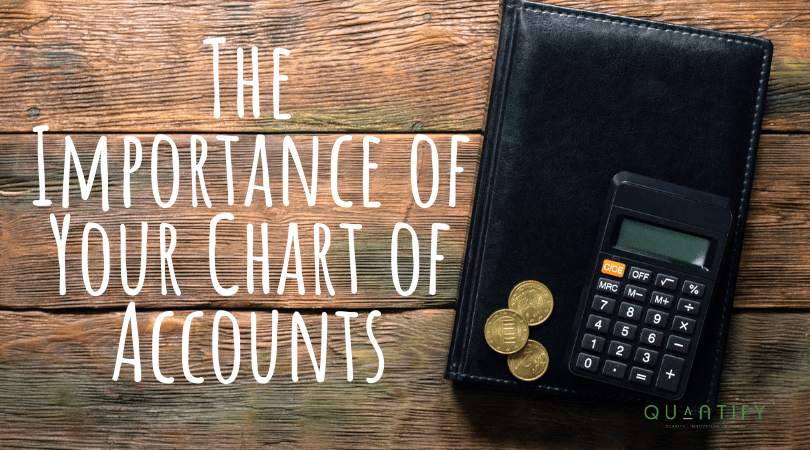A term often tossed around when discussing accounting or bookkeeping is the Chart of Accounts. I want to take some time today to make sure you know what it is and why it is important. But first, let us look at a basic definition…
The chart of accounts (COA) is an index of all the financial accounts in the general ledger of a company. In short, it is an organizational tool that provides a digestible breakdown of all the financial transactions that a company conducted during a specific accounting period, broken down into subcategories.
Now that we have an idea what it is, let’s look at the component of the COA…
Assets
An asset is anything that the business controls and has financial and/or economic value. Assets typically include items such as cash, accounts receivable, equipment, and inventory. Full ownership of the assets does not matter in this situation. For example, let’s say you buy a new piece of machinery and finance it 100%. Even though it is technically not yours yet, it is still listed as an asset on the balance sheet.
Liabilities
Liabilities are debts that you owe others or future obligations. This would include items such as accounts payable, mortgages, and business loans. Liabilities may also include amounts received in advance for future services rendered. For example, if you receive money upfront for a project which will begin in three months, the money you receive is “deferred” until services are performed for the client.
Equity
As the owner of the business, equity is how much of the business you own. If you sold all the assets of the business and paid all the debts, your equity is what would be left. Keep in mind however that equity is not necessarily what the business is worth. Typically businesses are valued as a multiple of sales, EBITDA, cash flow, or other considerations.
Revenue
What is revenue? In its most basic form, revenue (also known as sales) is all of the money coming into the business. Pretty simple.
There are, of course, certain exceptions to this rule: If your business loans someone money and that person pays it back, it is money coming into the business, but it is not revenue! Return of capital is never revenue for the business. This simple principle gets overlooked by a ton of people.
Expenses
What are expenses? Expenses are typically anything being paid out of the business.
However, there are some exceptions to this as well. As in the example above: if you were paying back a loan this would be money out of the business but would not be considered an expense. Things just work differently with loans and they require different treatment.
Why is it important to be organized?
When you look at your financials, you want to get a clear picture of the health of your organization. The best way to do this is to have a chart of accounts that is well organized and designed specifically for your company. If there is no rhyme or reason to how it is set up, you are going to struggle to understand what is going on.
One way to help create additional organization is by assigning numbers to each account. These numbers can be used when creating custom reports or as a reference instead of typing out the entire COA name.
Finally, having good organization will allow for much easier analysis. Many financial analysis tools will require you to group certain accounts together. If you are already organized ahead of time with your COA, this will make the process very efficient.
Conclusion
Having a well thought out and organized chart of accounts sets up your entire accounting function. I cannot stress the importance of this enough.
How does your chart of accounts look?






